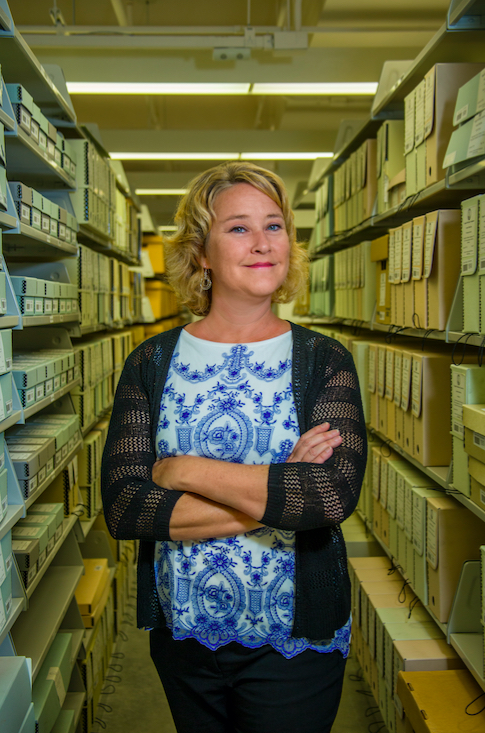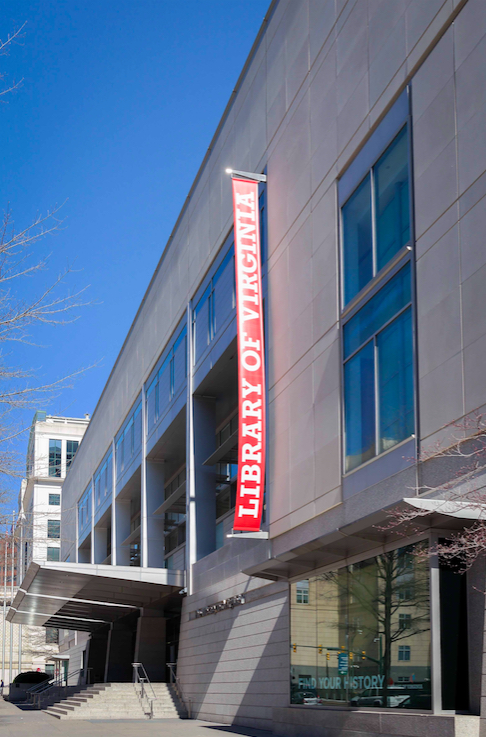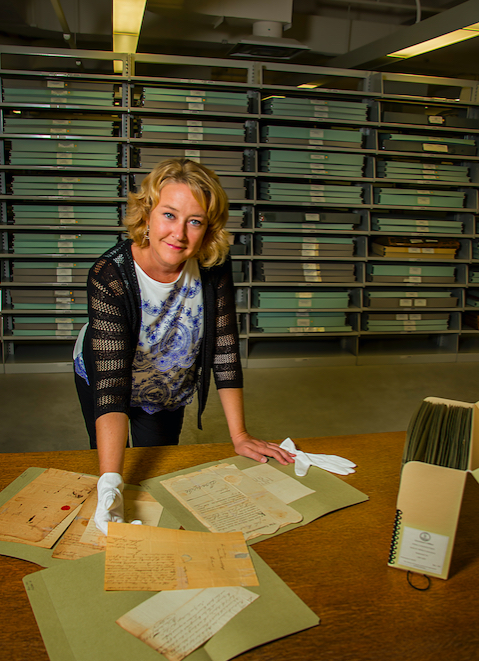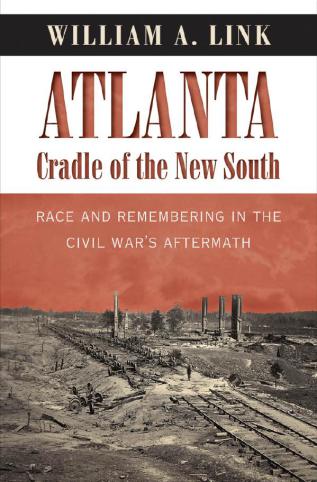
Library of Virginia archivist Renee Savits
In 2010, Renee Savits faced a dilemma. A career archivist, Savits had been with the Library of Virginia for 11 years, rising to manager of its vast private papers section. The Pennsylvania native was just where she wanted to be: spending every day with her hands on history, organizing and preserving documents and photographs that had long outlived their creators. But budget cuts at the library were frequent, and in 2010 they hit middle management. Savits’ job evaporated. It looked like her time at the library was done—until her bosses floated another option.
The Civil War’s 150th anniversary was fast approaching, and the Virginia Sesquicentennial of the American Civil War Commission was about to launch a colossal statewide commemoration campaign. Banners, parades, plays, and conferences were all in the works. An 18-wheeler with an interactive Civil War exhibit was set to travel the state. The commission had also established local sesquicentennial committees in almost every county or independent city in Virginia, more than 130 altogether. These committees were working furiously to design their own events and experiences that would help bring the war and its legacy back into the public eye.
The Library of Virginia had a different idea. What if the sesquicentennial presented an opportunity not just to share Civil War history, but to gather it? Nobody knew how many original wartime documents—from diaries to daguerreotypes—remained in private hands beyond sight of the public record. But one thing was clear: They were out there. What if the library launched its own colossal campaign to bring these items out of the attic and into the light, then scan them for posterity? What new insight into the war and those who lived it might that effort yield?

The Library of Virginia
The Library of Virginia took the idea to the Sesquicentennial Commission, which came on as a partner in what was soon dubbed the Civil War 150 Legacy Project. One archivist, Laura Drake Davis, had already signed on to help spearhead the effort. But they needed two, so they turned to Savits.
“‘You’re either laid off or you can do this job,’ is sort of what it came down to,” Savits recalled. She took the job.
It wasn’t a light commitment. Savits and Davis spent the next two years traversing the state, traveling nearly every weekend to a new town or county in search of hidden history. Savits covered the eastern half of the state, while Davis tackled the western half. Before every stop, local sesquicentennial committees put out word they were coming. Still, Savits remembers her nerves at those early events, perched beside her scanner and wondering if anyone would show up. “We had no idea what would happen,” she recalled.
People did show up—in droves. At most events the lines were 30 people deep, everyone with 150-year-old paper clutched in their arms. “People want to share their family treasures, but they don’t want to give them up,” Savits explained. By creating an opportunity for these treasures to be seen but not relinquished, the project had unlocked more history than it had either imagined or planned for. Almost no one showed up with just one item. One woman had three Civil War diaries. Others lugged hundreds of documents. Savits had to enlist volunteers to keep up with the demand. “It was eight- to 10-hour days of constant scanning,” she said. “It was wonderful, but exhausting.”
Ultimately Savits and Davis scanned more than 37,000 documents, most in very good condition. “Paper back in the 1860s was actually a lot stronger,” Savits explained. Still, she was amazed that families had kept the documents so well preserved through the generations—and so well guarded. “That was the most exciting part,” she said. “Who has ever seen these before? Nobody. They are not in libraries or historical societies. They are in people’s homes. It opened up a flood of new information that had never been out before.”
During the first two years of the project, Savits and Davis were so busy traveling and scanning that they didn’t have time to figure out what they’d collected. Once travel ceased, Savits was given the task of cataloging everything, which took years. There were diaries, daguerreotypes, tintypes, voting and payroll reports, soldiers’ sketches, and thousands of letters. There was also sheet music, reunion memorabilia, cartoons scribbled on the back of envelopes, and broadsheets posted after battles asking for help of one form or another. As Savits put it: “There was all kinds of paper material, and there was just so much of it.”
But there were standouts. Like the diary of Frederick Watkins, a soldier in a New York artillery unit who was shot three times at Gettysburg. That diary, tucked in his breast pocket, stopped a bullet that otherwise would have killed him. “He continued keeping the diary afterward and just wrote around the bullet hole,” Savits marveled. Or the heartfelt letter from a Confederate soldier mortally wounded at the same battle. “He writes a letter to his mom as he’s dying. ‘I’m shot, I’m going to die, I love you. Please don’t worry about me,’” said Savits. “It was heartbreaking.”

Renee Savits at work
While the Civil War 150 Legacy Project focused on Virginia, it drew out tucked-away history from across the country and beyond. “We got documents from Texas, Canada, New York, Florida, and everywhere in between,” said Savits, because present-day Virginians’ ancestors hailed from all these places. “We weren’t going to say no to any of it.” One of her favorite finds was a collection of 400-plus letters written between a soldier in the 20th Connecticut Infantry and his wife. “Seventy-five percent of the letters we see are from the men writing home,” explained Savits, so the fact that the wife’s letters survived was unusual. But it was the everydayness captured within them that gripped her. “Most of his letters to her were things about the farm at home, ‘Sell this horse but don’t sell that horse,’” she said. “It was day-to-day life, which was just so interesting.”
Savits’ excitement about the project’s findings has settled into something more like relief. “No matter what happens to the originals, we’ll always have these digital images,” she said. High-resolution scans of all 37,000 documents are now online and accessible to anyone. Researchers and historians are already working to draw out meaning from them. Descendants have found new information about their ancestors. Savits still fields calls from people wanting to talk to the families that shared these treasures, hoping they might have more documents and more stories.
Savits knows there is more out there. The Civil War 150 Legacy Project may be complete, but it has transformed her perspective on just how much history remains concealed, and how much we need to find it. “This project sort of changed my life up,” she admitted. After years of having history come to her, she had stumbled into becoming its seeker. Savits is still with the Library of Virginia, focusing on state records. She loves her job. But she wonders what would happen if the library did another push to find more Civil War history. Or if they launched a campaign to unearth privately held documents from the 18th century. “I would have loved to keep doing it,” she said. Now, when she drives around Virginia, past old houses, she can’t help but wonder what’s behind their doors. “Who knows what might still be out there?”
To see the collection, renamed the James I. Robertson Jr. Civil War Sesquicentennial Legacy Collection, visit virginiamemory.com/collections/cw150.
Jenny Johnston is a freelance writer and editor based in San Francisco.
This article appeared in the Winter 2017 (Vol. 7, No. 4) issue of The Civil War Monitor

